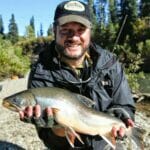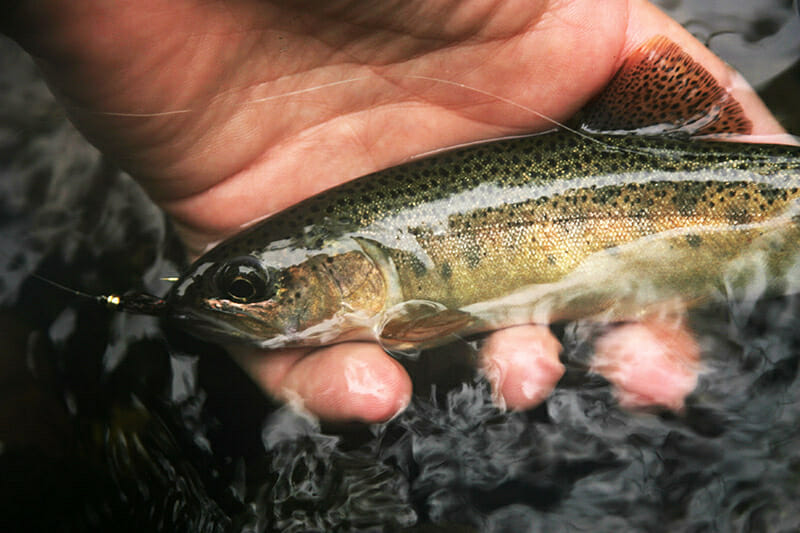Native fish like the Gila trout pictured here can use support in political circles as much as in their rivers. Greg McReynolds/Trout Unlimited
By Randy Scholfield
Why don’t people care more about conservation and trout? And what can we do to change it?
That was the pressing topic that kept coming up recently at the annual Wild and Native Trout Conference in Phoenix. While there was plenty of science geek talk about temperature monitoring data and the genetics of native Apache and Gila trout, several of the speakers kept coming back to a more fundamental and human problem that, long-term, poses perhaps the most significant obstacle to recovery of these unique species: Not enough people care.
At present, several speakers said, there simply aren’t enough people who care enough to take action, whether by helping with a project, donating money or writing a lawmaker to urge protection of conservation and science budgets.
Environmental issues routinely come in at the bottom of surveys about which issues people care about most. And that trend could doom some native trout species unless scientists, anglers and conservationists who do care turn it around.
Trout Unlimited’s senior scientist, Jack Williams, stressed how important it is for scientists to break through and begin communicating more effectively with the public about climate change and other threats to native trout species.
“We need to link the well-being of those fish to the well-being of ourselves,” he said.
A start, he said, is educating people about the value of water. He pointed out that Phoenix is dependent for part of its water supply on the Salt River, which in its headwaters is a refuge for native trout. If those trout are in trouble, through climate change, wildfires and other threats, then many other wildlife species and Phoenix itself might be in trouble.
Dr. Scott Bonar of the University of Arizona also spoke eloquently and with urgency about getting people to care. One problem is simply a modern disconnect with the natural world: Few Americans, he said, are involved directly in conservation issues and the outdoors, and many are unaware, or have forgotten, just how bad things were in the past.
Remember when our rivers were dumping grounds and the Cuyahoga River caught fire? Remember the horror of mercury poisoning in Japan? Remember the Dust Bowl, which was in part a human-made catastrophe?
Many younger Americans don’t remember those events. That’s why we need environmental education and environmental history in our schools, he said.
He also called on scientists and conservationists to be more direct and personal in getting the message out to the public. We can’t keep talking just to ourselves in science journals and other places where we preach to the choir—we have to reach out and “tell people why conservation is important to them and their families.”
Two key things they need to know:
What are they going to lose? People need to understand how climate change and loss of species and river health might impact—or is already impacting—their quality of life, communities and economy.
What are the options for action? People need to know how to get involved to make a difference.
All of us bear some responsibility for getting the message out in our daily lives, Dr. Bonar said. Start with family and friends—if the topic comes up (or even if it doesn’t), let them know the importance of combatting climate change and conserving species. Let them know this is important to you.
TU President and CEO Chris Wood, in his talk, agreed that, “The enemy is apathy.” He noted that TU’s work promoting stream resilience and healthy habitat is is tremendously encouraging and gives hope that we can make a difference.
He pointed to TU’s “citizen science” initiative as one way TU is enlisting people in science-based solutions. Here in Arizona, that includes a new project in 2017 that gets chapter members and U of Arizona students out into the field, helping to install and monitor stream temperature devices.
There is no shortage of effective solutions and actions available to us—but first, we need people to care.
At present, too many people don’t care or are simply distracted. And if we fail to turn that around and make the case for conservation, then we will fall short of protecting and restoring wild places and creatures that we love.
We have a lot to lose by our silence.
Randy Scholfield is TU’s communications director for the Southwest.



